By Cal Cleary
Özge Samanci is a multi-media artist, an assistant professor at Northwestern University, and a talented cartoonist who has had exhibitions of her work hosted all over the world. Her first graphic memoir, Dare to Disappoint, is out now from Farrar, Straus and Giroux. It follows Samanci’s coming of age in Turkey. From a youthful infatuation with a teacher to her struggle to express herself in a hardline conservative school, Samanci’s graphic memoir is funny, heartfelt, and illuminating.
Recently, the Comics Beat got an exclusive look at Dare to Disappoint. Today, we’re proud to present a conversation with Samanci about art, family, academia, and more.
Cal Cleary: It seems like art was always a part of your life. Looking through this book – you talk about reading comics with your sister, drawing in the margins of your school notes, things like that. Do you remember what your earliest introduction to comics was? Have any of them made a lasting impact on your personal artistic style?
Özge Samanci: My Uncle Nihat, one of the characters in Dare to Disappoint, was a student in a college and he used to bring weekly humor magazine with him when he visited us. Because of the tragedies of daily life in Turkey, humor is a safety blanket in Turkey and there is an established weekly humor magazine tradition. I learned to read with a humor magazine called Girgir. I would read a single frame comic from the magazine and then ask my sister “why is this funny?”. Sometimes she did not know why, then we would ask our parents.
Cleary: Are there any other cartoonists who have inspired your work more recently?
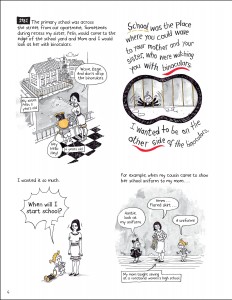
Jean-Jacques Sempé, I love the proportions of adults and children. In a Sempe drawing children are so small they barely reach the knee of an adult. His landscapes are like lacework; you can look at them for hours. I love how he portrays the enthusiasm and seriousness of his characters, especially children.
Chris Ware and Alison Bechdel amaze me with the amount of time and energy they invest in one frame and they both follow unconventional narration styles. Chris Ware also creates new methods for making comics.
I also enjoy the works of Gabrielle Bell, David Mazzucchelli, Marjane Satrapi, Ilban Ertem, Uğur Gürsoy, Roz Chast, Piyale Madra, Dan Zettwoch, Joann Sfar, Nicolas Mahler, Maira Kalman.
Cleary: In Dare to Disappoint, you eventually reach the realization that you would enjoy doing art for a living. Once you had that realization, how did you get started cartooning professionally?
Samanci: After that realization, I spent 4-5 months drawing maybe 8-10 hours a day. My sister supported me, and I was tutoring to make a few dollars. At the end of that period, I started working for the most popular weekly humor magazine of the time. I became a professional comics artist, but the money I made from comics was so tiny, I can’t remember, but it was something like $100 per month. I got another day job, which was very demanding. I worked as a teaching assistant in a design department of a university. I was called a teaching assistant but I was doing everything: painting walls, tutoring professors’ children, paying their bills at the bank, installing furniture. I was like an office boy (girl).
Cleary: In addition to being a graphic novelist, you’re also a talented multi-media artist. What made you decide to format this story as a graphic novel for this particular story?
Samanci: I never imagined telling the story of Dare to Disappoint as an interactive art installation. In my experience, interactive art pieces are powerful to communicate metaphors, poetic moments. It is extremely challenging to narrate cause and effect based stories in interactive forms. I also didn’t want this story to be interactive. It’s the story of my life and I just wanted to tell it myself. I pushed the boundaries of the medium of comics and combined collage, three-dimensional objects with my drawings. That aspect of the book is close to media arts.
Cleary: What your process for putting together such a long-reaching autobiographical story?
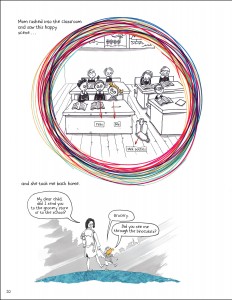
Instead, I started a webcomic, Ordinary Things, www.ordinarycomics.com in 2006. I have been drawing an image almost everyday about an ordinary moment from my daily life that stayed in my mind and posting the image to Ordinary Things. I still post comic collages to Ordinary Things and in many years, I developed a comic collage aesthetic there. In 2009, I found the courage, and thanks to Andrew Mellon Fellowship, I found time to make sample chapters for my graphic novel. Dare to Disappoint emerged from my enthusiasm for making presents, drawing letters, telling stories, making collages and drawings, and sharing them with people.
Cleary: In Dare to Disappoint, you do a great job at veering between the pleasures and stresses of childhood, young adulthood, and the cultural struggles that surrounded you the whole time. How did it feel to recreate all these different elements from your youth and see them all laid out in a narrative like this?
Samanci: All these aspects are connected to each other. They are like the beads on a necklace. When you pull one bead, the other beads are coming with it. Stresses of childhood are connected to politics of Turkey and cultural struggles. I could not tell the story without describing the context.
Cleary: You often forego distinct panels and gutters in the book, instead having relevant objects fall between them artfully, or bending the words and turning them into a panel. What inspired this particular format for Dare to Disappoint?
Samanci: Thank you for observing and appreciating that. I feel trapped or suffocated when I draw in frames. I like reading comics with frames but I don’t like using that convention. I use an entire page of a book as one frame. In that big frame, I create a path for the eye of the reader so they don’t get lost.
This comic-collage style emerged from my notebooks. I am a better listener when I draw or make collages. In my backpack, I was always carrying glue, scissors, a couple of electrical tapes, and fliers that I collected from coffee shops. Whenever I was with friends, I was keeping my hands busy and creating pages in my notebooks. After I filled 10-15 notebooks, it occurred to me that I can combine comics and collage for my webcomics, Ordinary Things. Since 2007 I have been using this aesthetic.
Cleary: You use a wide variety of artistic styles, often side-by-side. Collage, illustration, even water colors all seem to coexist, sometimes within a single, gorgeous image. How did you decide what styles to include and what to leave out, where each style fit in with your story?
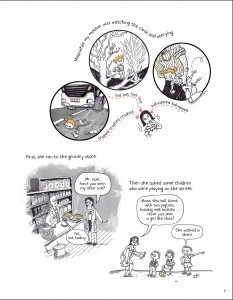
Cleary: A large part of this story hinges on your relationship with your family, which wasn’t always an easy one. Was there any point where you were worried about including something that would hurt or offend them?
Samanci: Yes, there are those points. I love my dad and I hope the way I told this story won’t offend him. If it does, I will deal with it. I am not like Robert Crumb or Alison Bechdel. They can tell the story fearlessly. I had my fears.
Cleary: One of the strongest through-lines of Dare to Disappoint is a fantasy, loss, and rediscovery of a love of learning. As a professor yourself now, do you feel like the way you’ve processed this journey, from your early crush on your teacher to later struggles to find your niche in academia, any differently now than you did when your academic career was first starting?
Samanci: There is always fantasy and loss but love of learning remained dominant once I figured out what I love to do. I loved working with images, metaphors, representations, and stories. But it took long time to be able to say I make comics and media arts. I may make a sequel to Dare to Disappoint to narrate that experience.
Cleary: Are there any artistic projects that you’ve got coming up that you’re excited to talk about?
Samanci: Yes, there is one that I am dying to talk about. I just finished my most ambitious interactive installation, Fiber Optic Ocean.
This project was a turning point in my way of thinking since it allowed
me to realize my drawings in sculptural form. Fiber Optic Ocean portrays and performs what happens when technology invades the world’s oceans. Three life-size shark skeletons are trapped in an ocean made of fiber optic threads. The piece procedurally composes music made with trombone and choral voices generated by live data coming from live sharks (tagged with GPS) and human internet traffic.
This is a 20 feet by 20 feet installation.
Dare to Disappoint is on sale now from Farrar, Straus and Giroux and can be purchased anywhere you buy books!


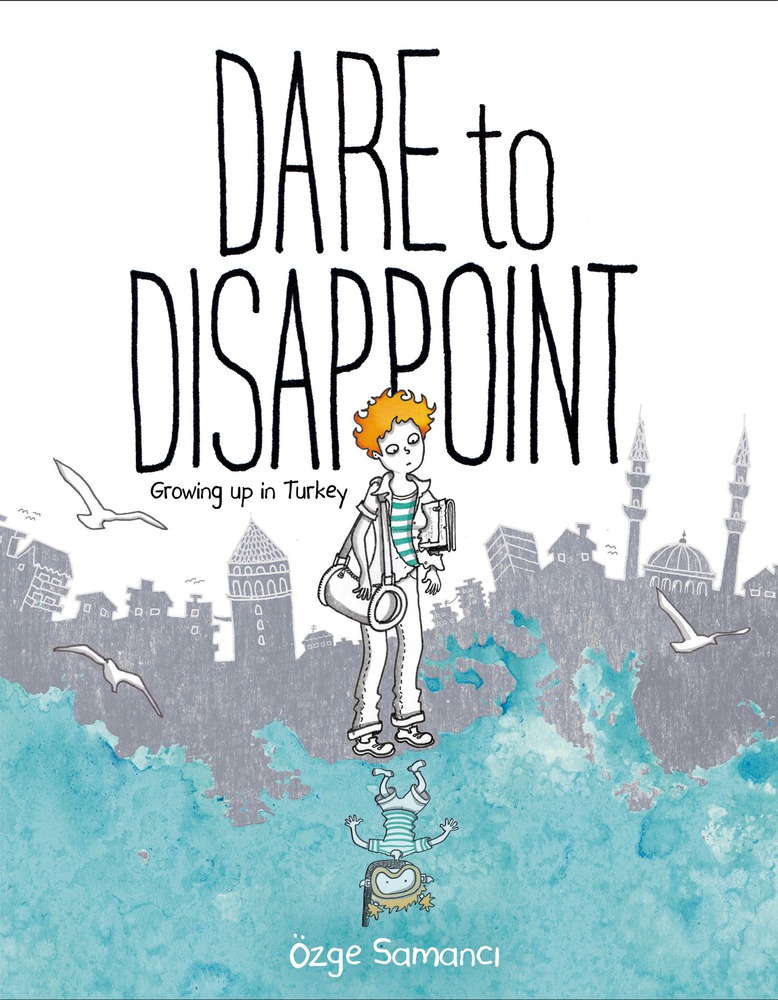
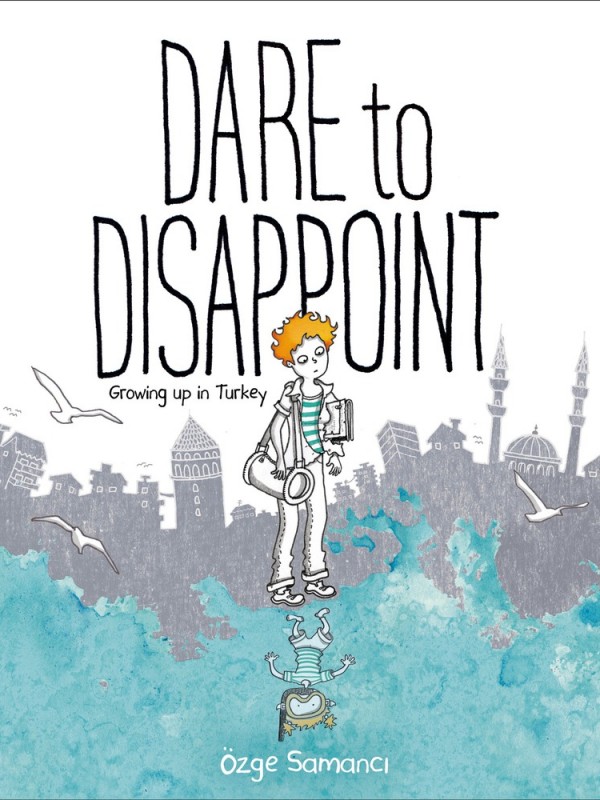
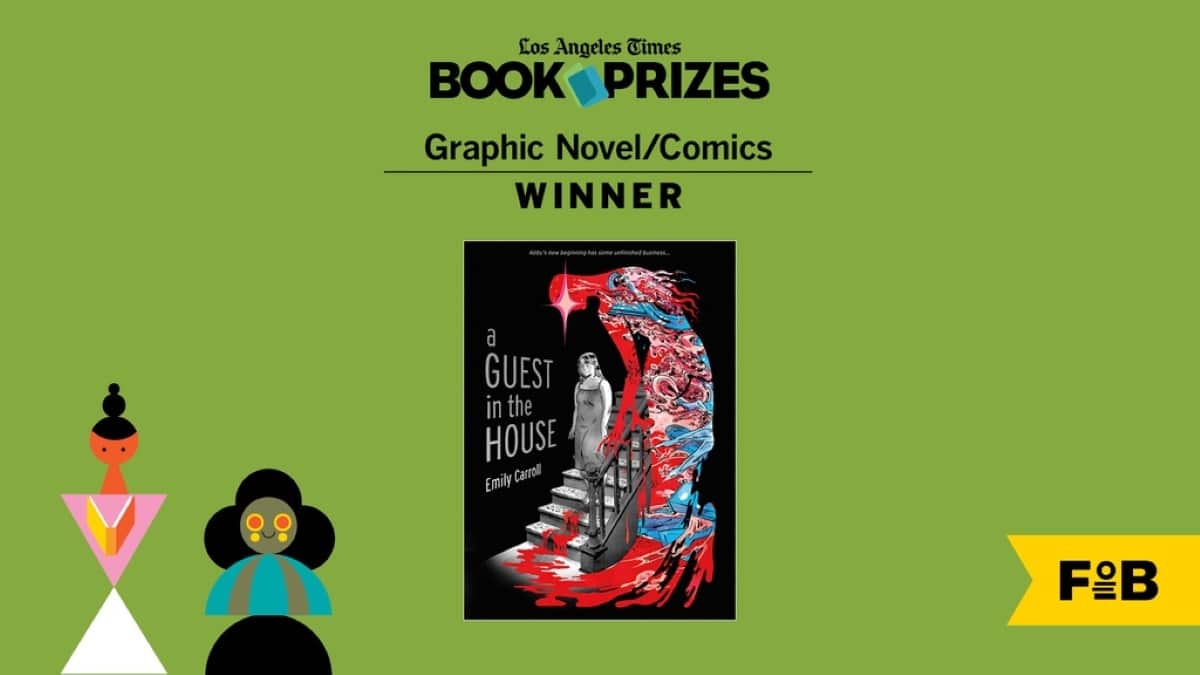





As a Kurdish woman from South Eastern Turkey, I read her book with a lot of mixed emotions. There are so many similarities in what our generation went through in that particular period in Turkey. Even though we were from very different backgrounds, family history, ethnicity, social and economical status and regions apart, the politics of the country had a big impact on our childhood, teenage years and adulthood. Our generation and the future generations will benefit from such a good book. Just wanted to thank you for this interview. I have just finished Dare to Disappoint last night :)
Comments are closed.